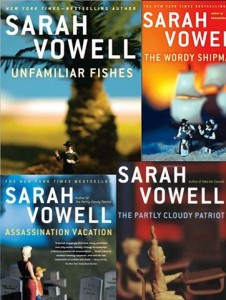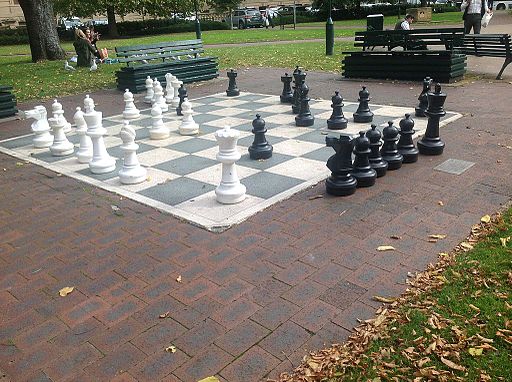
For a new Culture on the Edge series “You Are What You Read” we’re asking each member to answer a series of questions about books—either academic or non-academic—that have been important or influential on us.
5. What’s a book that you love but which isn’t widely read?
Anything by Sara h Vowell.
h Vowell.
While enjoying her dry wit and occasional sarcasm, what I love so much about Sarah Vowell’s writing is that it is widely accessible yet incredibly well researched, making her the ideal example of what some of us aspire to do (perhaps on a blog such as this even?): reach wide audiences with our scholarship. While not thinking that this is the sole audience, or even a required audience, to reach, for anyone wanting to write for wider audiences than just other scholars or other scholars-in-the-making (regardless what level they are in school), Vowell’s books present the model for how to do this. She strikes me as a poster-child for the relevance of the Humanities, in fact—a much discussed topic these days—for her 1993 B.A. from Montana State University in Modern Languages and Literature and her M.A., earned at The School of the Chicago Art Institute in 1996, in Art History are both in areas that, at least according to some, have little direct relevance for employability. Yet here she is, a widely selling author (even the voice of the daughter, Violet, in the animated film The Incredibles!) whose engaging books dive deeply into terribly complicated and, at times, controversial historical material—I think back to a sad, funny, troubling, and, ultimately, incredibly engaging story she did in 1998 on her and her twin sister’s summer travels along the Trail of Tears or her 2003 dissection of the tangled history of The Battle Hymn of the Republic, each remarkable pieces of history writing—but doing so in a way that makes the storyteller’s (or, in the case of the latter, the singer’s) own conflicted positioning part of the narrative as well.
So pick up one of her books, and see what you think—you may find them to be far more relevant for scholars and students that you might at first think, either as an example of how to write for wider publics or as an example of the skills that we in the liberal arts daily teach to our students (sometimes without even knowing it).


 Over the last week, many have written about the labeling of ISIS as religious or not, as Islamic or not, both in response to last week’s summit on
Over the last week, many have written about the labeling of ISIS as religious or not, as Islamic or not, both in response to last week’s summit on  While driving back from a rainy Sunday morning walk with my dog I recently caught an interview on the radio with
While driving back from a rainy Sunday morning walk with my dog I recently caught an interview on the radio with 

 h Vowell.
h Vowell.

 Sometimes social media is a great source for learning things, and sometimes it is not. Since my friends on Facebook range across a wide ideological spectrum, sometimes the references to the same event are so contradictory that I have no clue what “really” happened. Last month, when Joni Ernst presented one of the Republican rebuttals to Obama’s State of the Union, the disparity in responses was fascinating. Some friends made comments and posted articles that lampooned her performance, especially making light of her story about wearing
Sometimes social media is a great source for learning things, and sometimes it is not. Since my friends on Facebook range across a wide ideological spectrum, sometimes the references to the same event are so contradictory that I have no clue what “really” happened. Last month, when Joni Ernst presented one of the Republican rebuttals to Obama’s State of the Union, the disparity in responses was fascinating. Some friends made comments and posted articles that lampooned her performance, especially making light of her story about wearing 
